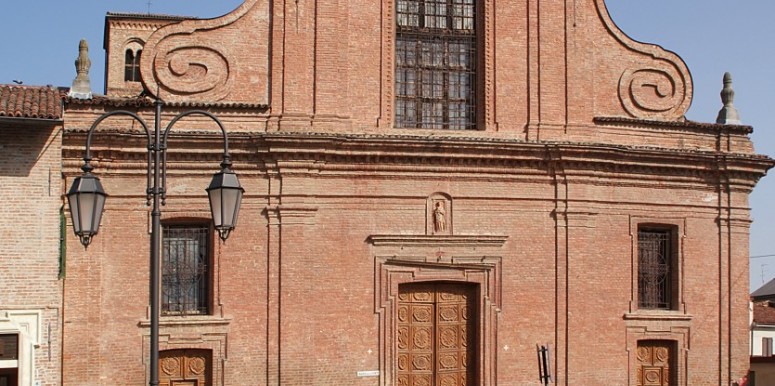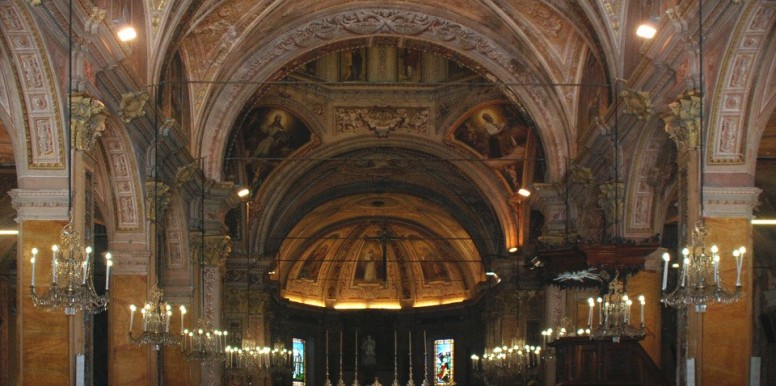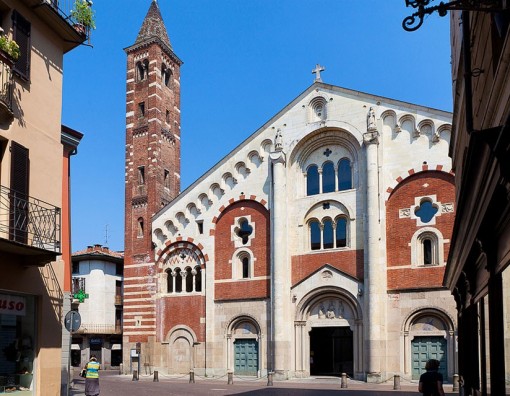Santa Maria della Corte
The parish church of Santa Maria della Corte is mentioned for the first time in 1005, belonging to the “curte regia Gamundii” of Roman origin and then Longobard capital which will become Castellacium from the 14th century . The suffix that accompanies the title of Holy Mary, della “Corte” is particular: it recalls “in curte regia Gamundii” (from here the suffix “della Corte”) mentioned by an instrument of 1005, which hands down its foundation from Maria the daughter of the Lombard King Adalberto. This is where history mixes with religious devotion, leaving a trace of the Lombard passage in the territory of Alessandria. Therefore, the first church existed as early as the 10th century, and in the early 15th century it was joined by a convent managed by the Servite Fathers until 1807. In 1494, the church was rebuilt with three naves, in late-Gothic style, maintaining the old bell tower, while the convent part was rebuilt in 1676. Flooded by the River Bormida in 1647, and burnt by the French in 1651, only the bell tower remains. Between 1665 and 1717, the building was rebuilt to a design of the architect Guglielmo Trotti according to the ancient layout. In 1894, work began to restore the interior frescoes, with the painter Rodolfo Gambini of Milan (1855-1928). Outside, the exposed brick façade stands out, in Baroque style, divided into two orders by a projecting cornice. Further divisions are given by the pilasters that frame the access portals in the bottom part, while in the top part a large rectangular-shaped window is surmounted by a tympanum with cymatium. Two volutes have the function of connecting the two parts. Inside, the church is divided into three naves, of which the higher is concluded by a polygonal apse, while the intersection between the nave and the transept is surmounted by an octagonal dome masquerading as a tiburium softened by circular openings. The church is full of artwork: a 15th century winged lion that refers to the Serenissima (Venice), sculptures by Vasari and by Anton Maria Maragliano (1664-1741) and paintings by Guglielmo Caccia known as Moncalvo (1568-1625). Of note is the wooden crucifix that escaped the fire of 1561 and a small late-14th century fresco depicting Saint Rocco and Saint Sebastiano. Particular devotion is due to the ancient wooden crucifix that miraculously escaped the fire of 1651, so much so that it was declared miraculous by Pope Benedict 15.
Information and contacts
piazza Santa Maria - 15073 Castellazzo Bormida (AL)
Telephone: +39 (0131) 272.832
E-mail: biblioteca@comunecastellazzobormida.it
Link
http://diocesialessandria.it/diocesi/parrocchie/castellazzo-bormida-santa-maria/






